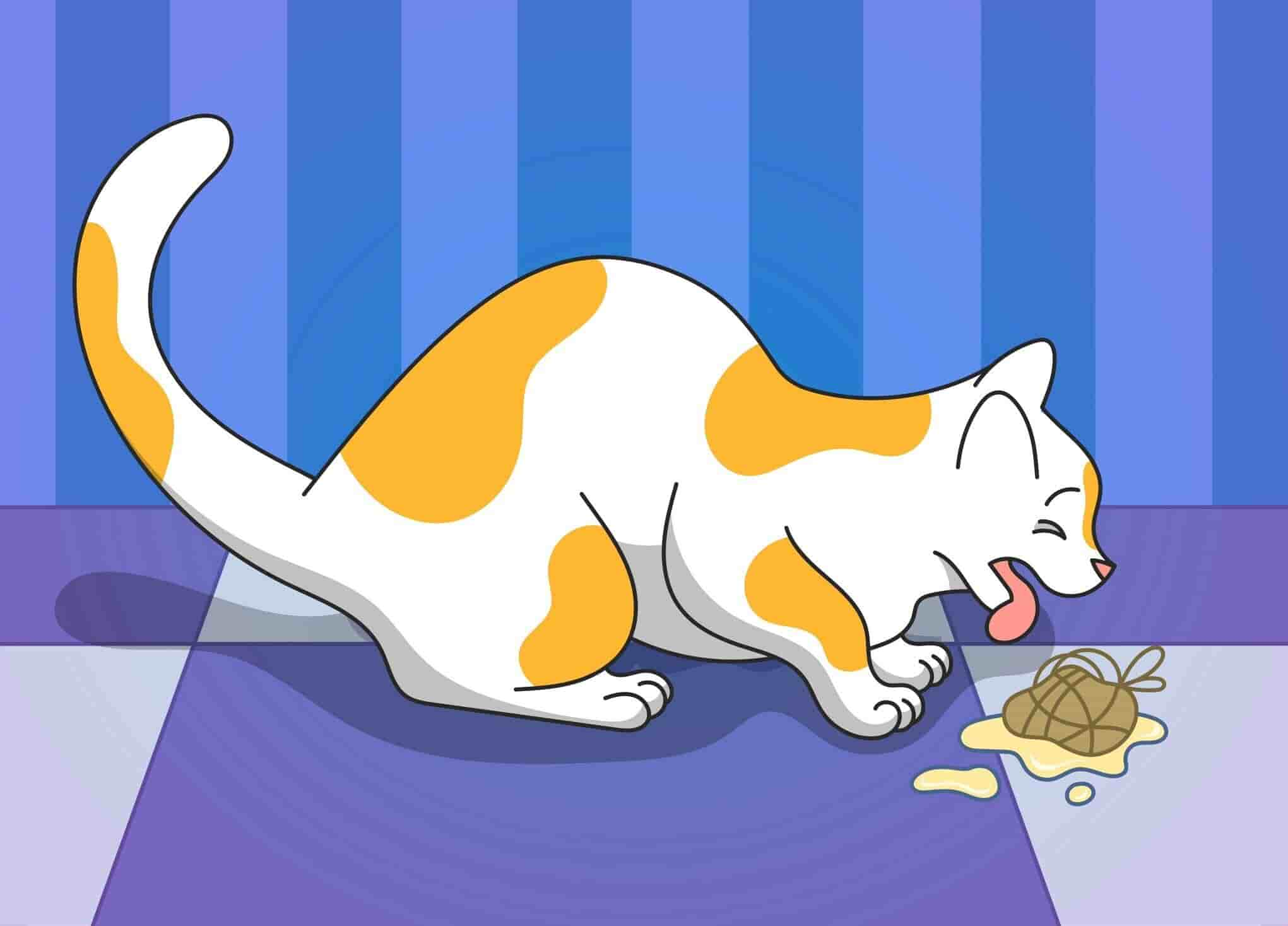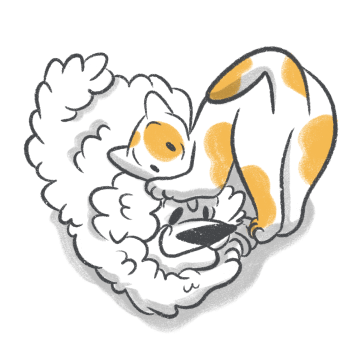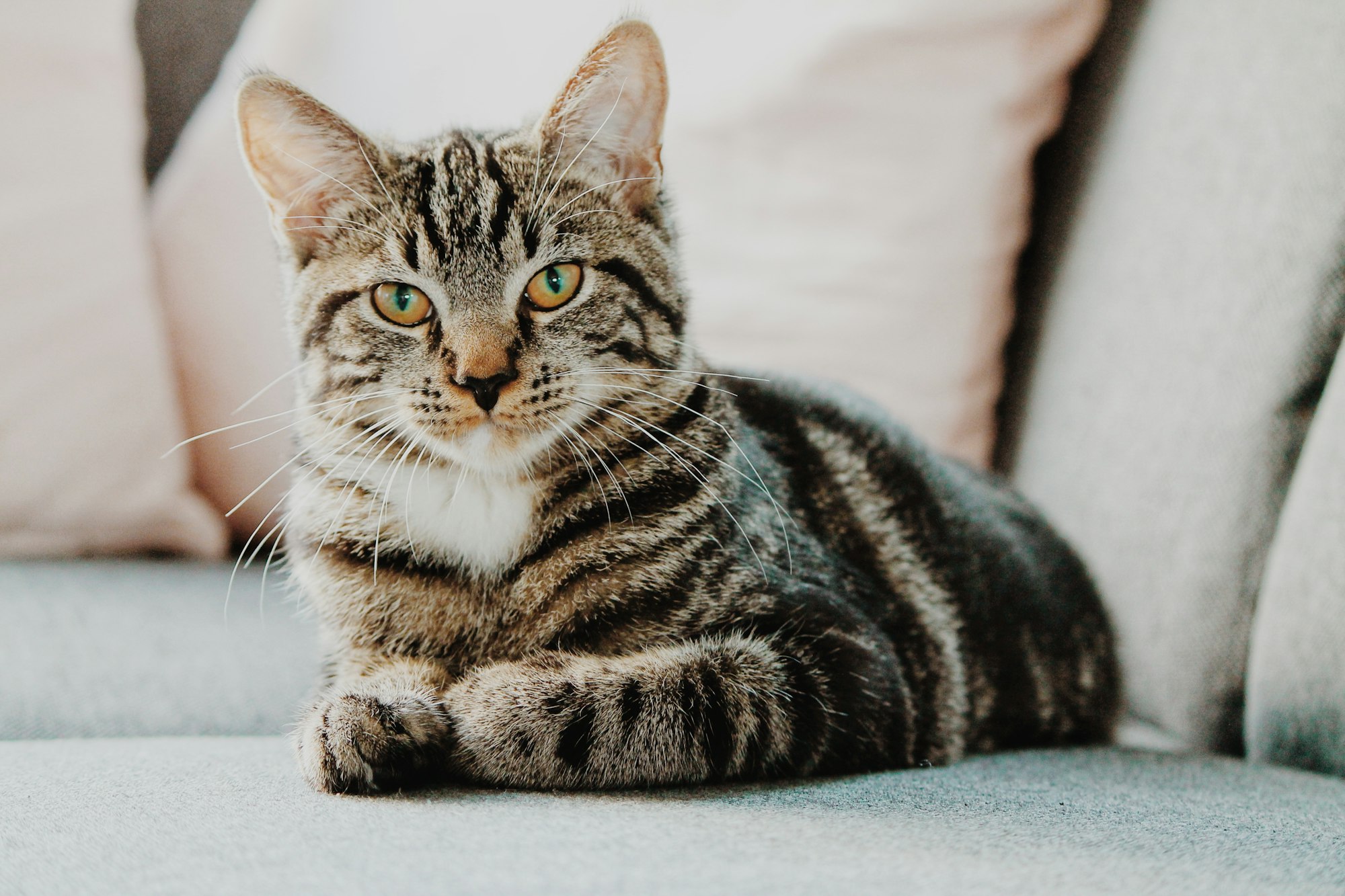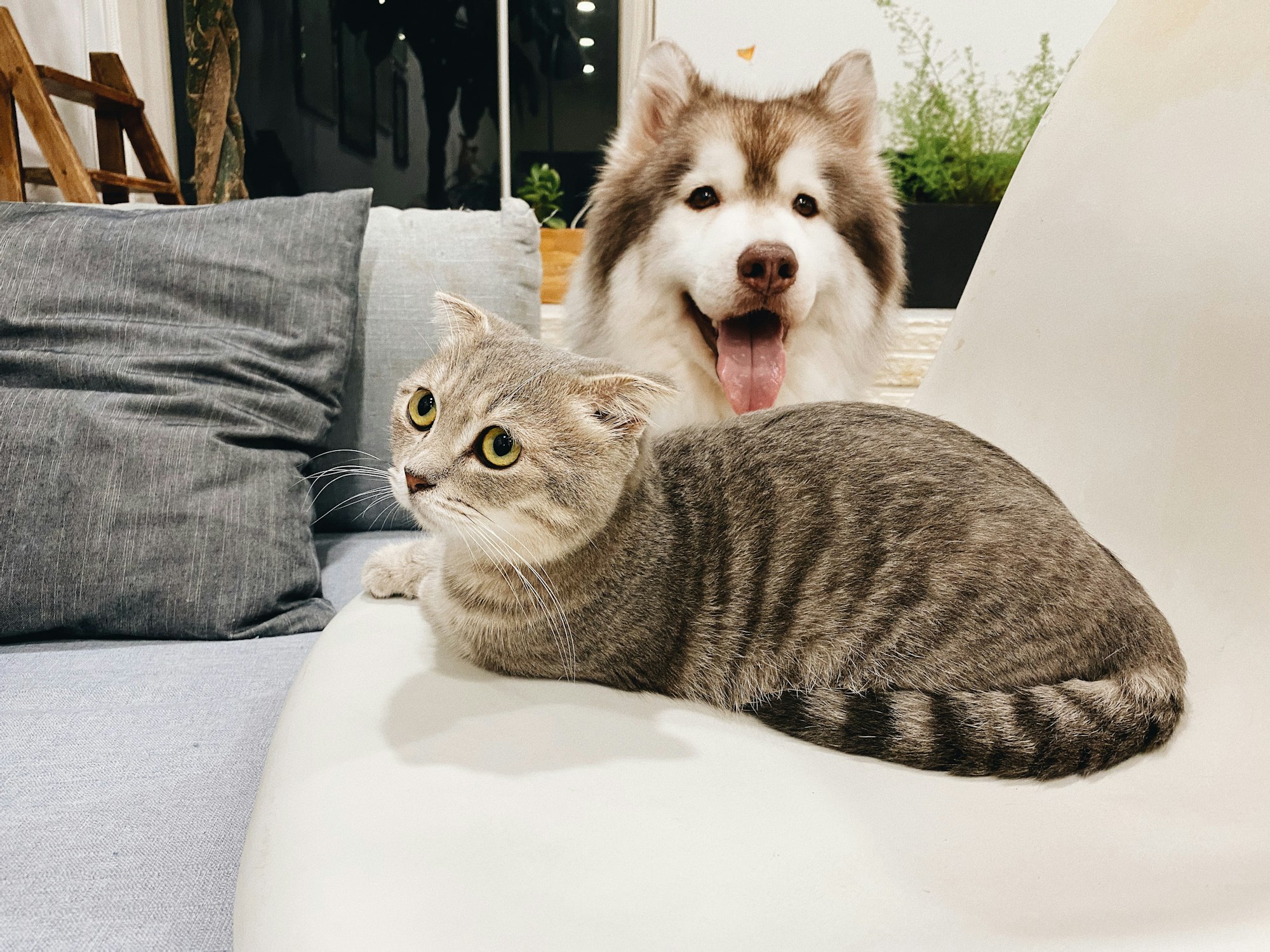Hairballs are slimy balls of cat fur that are all too familiar to many cat owners. These hairballs are coughed up by cats on occasion, especially by those who are meticulous groomers.
Generally, they are around 1 inch in length going up to five inches long, and are 1 inch thick. Its color is typically the same as your cat’s fur but a tad bit darker because of having been exposed to gas excretions and food in the digestive system.
Seeing these slimy and furry balls may be disgusting for us humans, but it is considered normal behavior for cats to be expelling up hairballs. In fact, it may be a result of your cat having good hygiene. But how do cats get them exactly?
This article was proofread and checked by Dr. Chris Vanderhoof (DMV).
How Do Cats Get Hairballs?
In the process of grooming themselves, a cat’s tongue which contains barbs combs through their fur to get rid of loose fur, debris, and dirt that may be present. During the process, fur that is ingested goes through your cat’s digestive system and is normally expelled through feces.
According to research, there are times when a cat's stomach cannot digest the hair, especially if there’s a lot, so instead of expelling it through their feces, the hair buildup can go up from the stomach to the esophagus and throat.
In this scenario, clumps of hairballs are formed and so your cat would want to expel it through their mouths.
Hairballs are more common in breeds that have long hair such as Main Coons and Persian cats. Those who shed a lot or those who have a compulsion to groom themselves all the time are also prone to having hairballs.
If you notice your cat getting hairballs even if they didn’t when they were just kittens, this is normal because as cats become older, they become more fastidious in grooming themselves. In this process, they tend to swallow more fur.
Cat Hairball Symptoms
It may be uncomfortable to see and hear your cat trying to expel hairballs. For one thing, they may make strange noises and behaviors such as gagging, coughing, and heaving before vomiting the hairball. While this may be disturbing to see, most cats successfully eliminate hairballs in a matter of seconds.
However, if you notice the symptoms below, contact your vet immediately as these may be indicative of a blockage due to a hairball that can possibly be life-threatening to your cat:
- Lethargy;
- Loss of appetite;
- Continuous gagging, heaving, coughing, or vomiting;
- Diarrhea;
- Constipation.
Read more: Why Is My Cat Gagging?
How To Help Your Cat Pass a Hairball
If your cat is having a hard time passing a hairball, there are methods to improve their digestive health and make it easier for them. Below are some of the ways how to help your cat pass a hairball:
Cat Food With Enough Fiber
One reason why some cats produce too many hairballs is because their diet may not have enough fiber in it. The fiber in food helps the hair pass along the gastrointestinal tract so that hairballs won’t form and develop.
Cat food with the right amount of fiber is beneficial in ways like preventing hairballs to develop. As fiber helps hair pass through, it also prevents blockages. Cat food with 3% fiber contents is good for hairball management and cat food with hairball control usually has enough fiber in it.
Hydration
It is important to make sure that your cat drinks enough water because dehydration can lead to illnesses in your cat, including digestive issues. Cats that are fed only dry kibble for example are more prone to get hairballs. This is because their digestive system exerts extra effort than normal.
A dehydrated cat may lead to the worsening of a hairball issue. To make sure that your cat is always hydrated, make sure that their water is clean and changed regularly. You may also opt for a fountain so that your cat can enjoy the water that flows freely.
You can also bring your cat’s water bowl to them from time to time to remind them to drink their water.
Hydration helps hair pass smoothly. It also prevents your cat from being constipated, which is one of the reasons why your cat may find it hard to pass hairballs.
Smaller and More Frequent Meals
When cats are fed smaller and more frequent meals, it allows the digestive tract to properly digest food and sweep fur as well. In fact, evidence shows that feeding cats smaller and more frequent meals promote positive welfare for them.
Gastric Lubricant
There are also products such as hairball lubricants, gels, and pastes that allow for hairballs to pass smoothly as they go through the gastrointestinal tract.
Hairball lubricants that are sold in the market are often composed of vegetable oils that help in the smooth passage of hair in the digestive system. These lubricants may also include ingredients such as aloe vera, chamomile, ginger root, licorice root, and marshmallow root.
Treatment: Best Hairball Remedies For Cats
You may be wondering what the best hairball remedy for cats is. Here are among some of the best ones:
Groom your cat on a regular basis
Grooming your cat lessens the fur that they end up ingesting when they groom themselves. When you brush or comb your cat’s fur regularly, it helps to significantly reduce hairballs while bonding with your cat at the same time.
If your cat gets used to being groomed, you may also bring them to a professional groomer on occasion.
Cat food with hairball control
There are cat food options that specifically have ingredients that help with hairball control. These hairball control cat food options contain the right amount of fiber for a better coat that helps cats shed less while also allowing for a passage of hairballs in the digestive tract.
Laxatives
If you’re looking for cat hairball medicine or products that address hairball issues, you might want to consider mild laxatives being sold in the market that promote a smooth passage of hairballs in your cat’s digestive system.
However, remember to consult with your veterinarian first before giving any medicine or treatment to be sure that it is safe for your cat.
Distract your cat from grooming excessively
If you feel that your cat’s hairball issue is due to excessive grooming, what you can do is try to distract them by engaging them with activities such as mental and physical games or bonding with them through play.
To keep your cat busy and active, consider using Petcube's interactive pet camera with a laser toy. An interactive laser toy allows you to entertain them remotely and keep your cat entertained no matter where you are.
How Online Vet & Emergency Fund Can Help
If your cat is experiencing hairball issues, it would be a great help to be able to consult with a vet about it throughout the process. Having said this, wouldn’t it be better if you can consult a vet wherever and whenever you find the need to consult or ask questions? Petcube’s Online Vet is among such services.
With Online Vet, you can consult with licensed vets regarding your cat's hairball issues, from inquiring about cat food with hairball control to asking about what to do during emergency situations, right before bringing your cat to the vet.
Read more: What To Expect From An Online Vet Visit
Since the service is available 24/7, you get peace of mind knowing that you can talk to a vet anytime regarding your pet's health and wellness.
Apart from the Online Vet service, Petcube also offers a Pet Emergency Fund that offers a worthy alternative to pet insurance. Having a pet emergency fund secures the veterinary expenses that might be needed to save your cat in case of a critical situaition.
Not to mention, Pet Emergency Fund is inclusive of the Online Vet service also by Petcube, allowing you to consult with a veterinarian throughout the process of caring for your pet.
FAQ
What to do if a cat is trying to cough up a hairball but can’t?
When a cat expels a hairball, it normally just takes less than a minute. However, there’s also a possibility of a hairball causing a blockage in your cat’s esophagus.
If you notice your cat looking distressed and if it’s taking longer than usual, bring them to an emergency vet immediately as blockages are potentially life-threatening.
Note from Dr. Chris Vanderhoof (DMV): There is a gross misconception among cat parents that cats "cough" up hairballs. This has led to asthmatic cats not getting proper treatment because the parent is trying to give hairball remedies. I would consider including a short paragraph here that coughing may not be related to hairballs at all, but can be indicative of another medical condition that a vet should have a look at.
What is the difference between cat cough and hairball removal?
While cats can have a cough, it is less common compared to other animals. Gagging, heaving, and expelling out hairballs may be mistaken for a respiratory issue such as coughing.
It is important to make the distinction that expelling hairballs is ultimately an act of vomiting (including gagging and heaving) but not true coughing. A recurrent coughing action with no hairballs produced is more likely indicative of another condition.
What if a cat hairball looks like poop?
Disgusting as it may seem, cat hairballs may indeed happen to look like poop (but thankfully without the same smell). Oftentimes, the color of a hairball is darker than the fur of your cat due to gastric excretions and food that the hairball might have had contact with in your cat’s stomach, so the color may sometimes resemble a poop’s color.

Was this article helpful?
Help us make our articles even better










